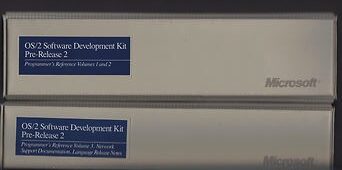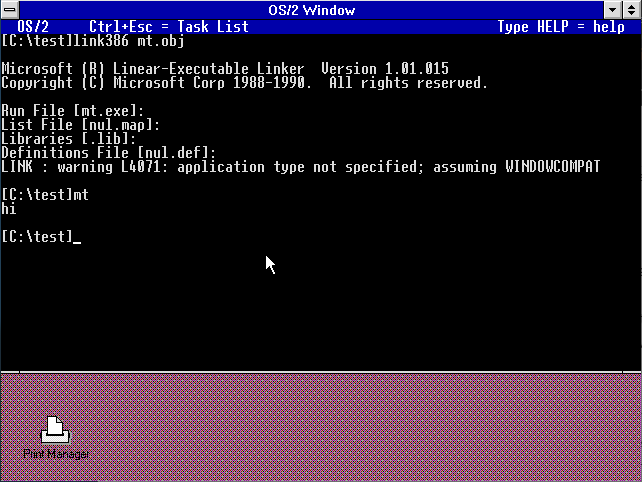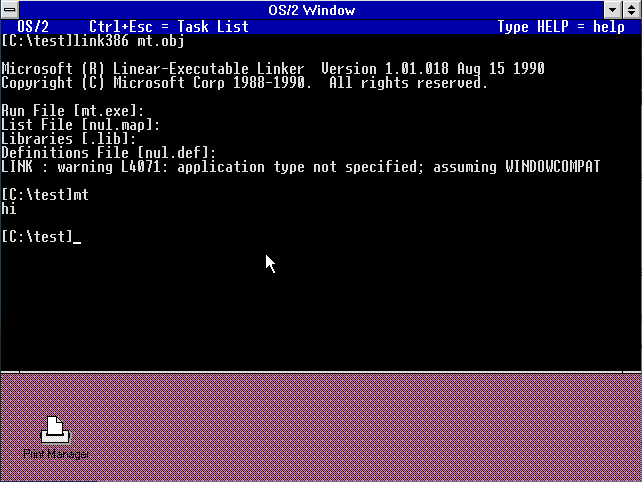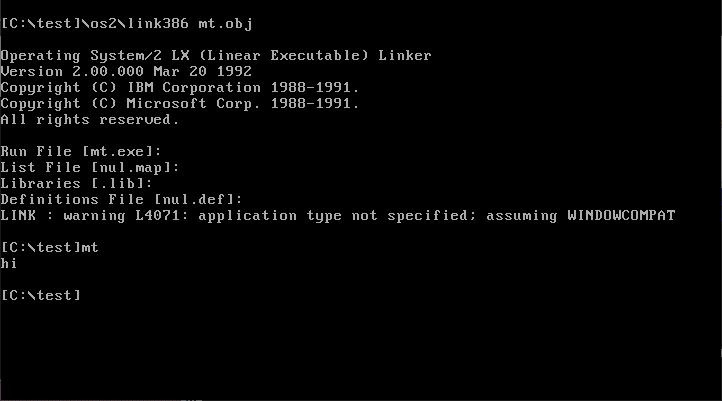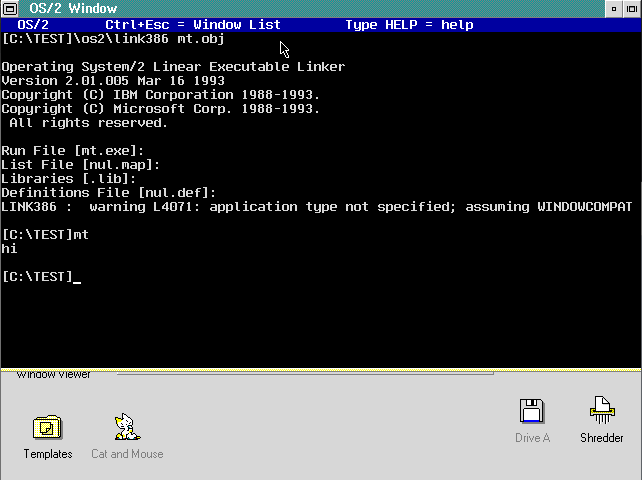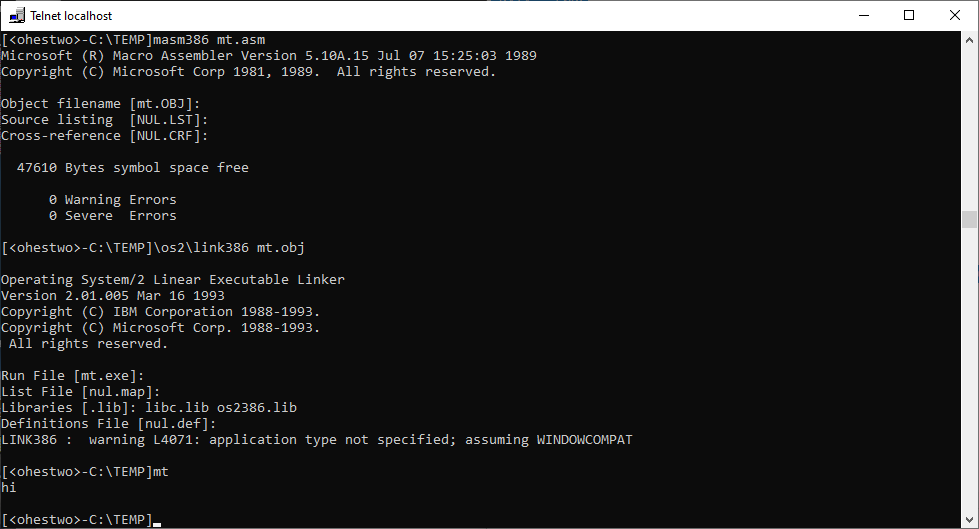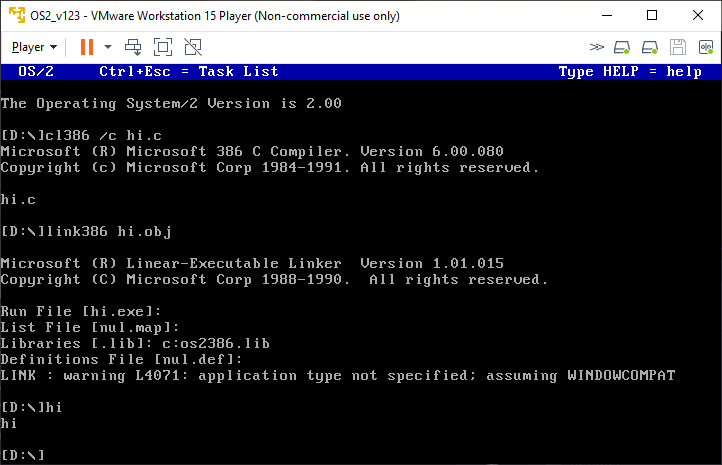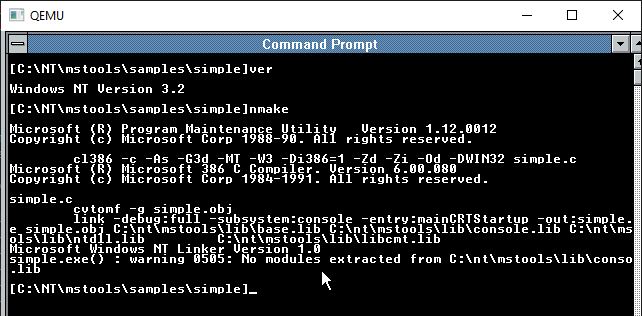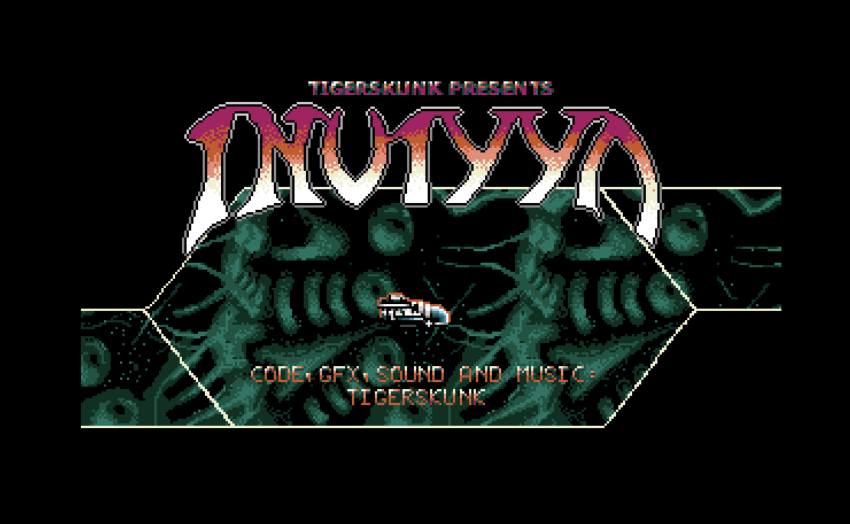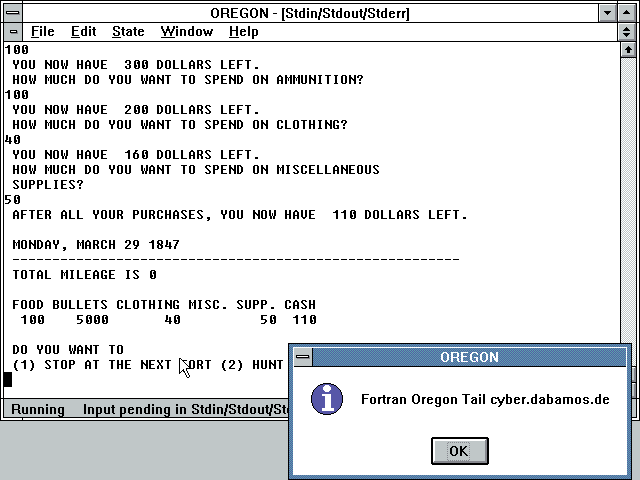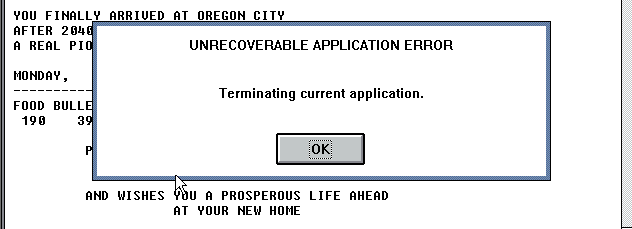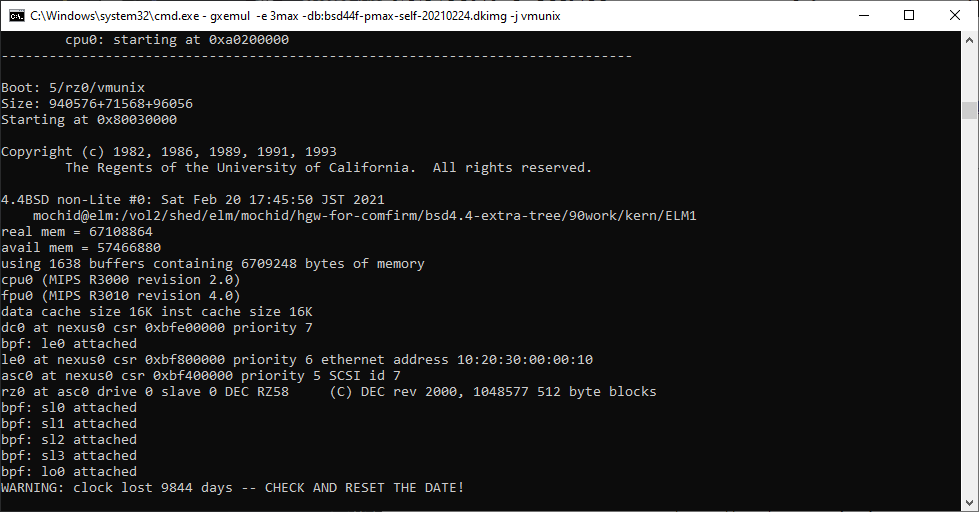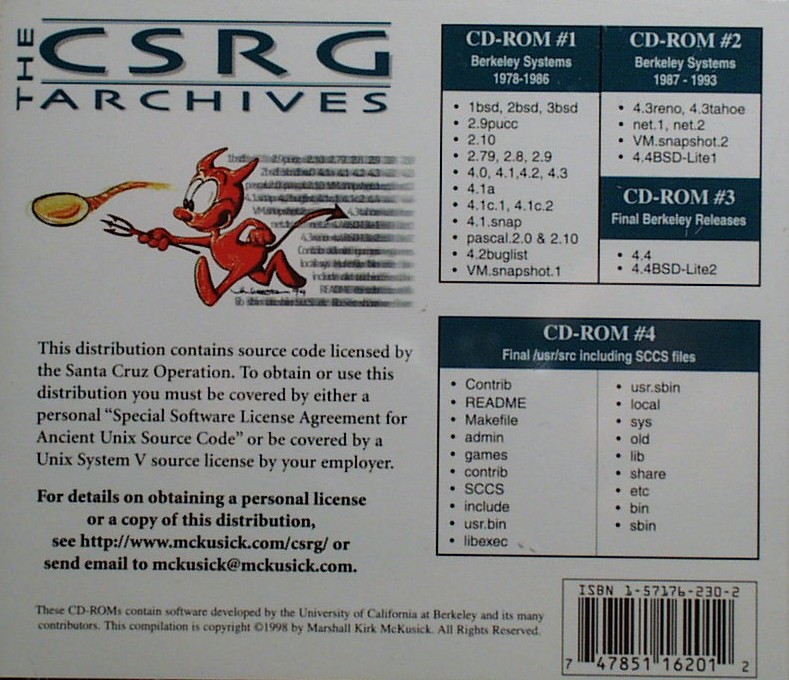This is really nothing more than a placeholder for me… Unless someone else knows the answer, then it’s really ‘how not to cross compile GCC’.
First I’m using the EMX’ified version of GCC from my MinGW to EMX cross. It didn’t require that much massaging to get it to build, the usual unzip as ascii to convert text, and in no time I can build cc1.
root@pinepro:/src/emx/src/gcc-2.5.8# file cc1
cc1: ELF 32-bit LSB pie executable, ARM, EABI5 version 1 (SYSV), dynamically linked, interpreter /lib/ld-linux-armhf.so.3, for GNU/Linux 3.2.0, BuildID[sha1]=42c0c8de7175edade7614dc92d5d13e4421e0e6f, with debug_info, not stripped
and it crashes in what has to be a 2020 most unfortunte name
Reading symbols from cc1...done.
(gdb) r
Starting program: /src/emx/src/gcc-2.5.8/cc1
Program received signal SIGSEGV, Segmentation fault.
0x004f6b84 in rtx_cost (x=<error reading variable: Cannot access memory at address 0xff7efff0>,
outer_code=<error reading variable: Cannot access memory at address 0xff7effec>) at cse.c:667
667 {
(gdb)
Yes, it really crashes in rtx_cost. Good thing there isn’t a super popular card from Nvidia that is currently being short squeezed by crypto miners right now called the RTX where everyone is looking for a good price. 😐
I had then been thinking perhaps it’s because I’m using GCC 8.3.0, maybe it’s introducing some new and exciting bug? So I cross compiled GCC 4.1.2 as follows:
./configure --target=armeb-linux --host=armeb-linux --build=armeb-linux
Keeping in mind that my knowledge of ARM is pretty much nill, especially on Linux. The compile went mostly okay, just have to remember the gnu inline macro’s as needed from back in the day (-fgnu89-inline) and while it builds, it is insisting on using collect2 which of course is screwing things up. And of course I don’t want it as my system compiler. As a hack I found system gcc 8 can link things fine as I didn’t want to spend all day messing with GCC/collect2
I copied xgcc, cc1 and cpp from 4.1.2 into a /412 directory, and rebuilt 2.5.8 with the following shell:
make CC="/412/xgcc -B/412 -g -O0 -I. \
-I./config \
-I/usr/lib/gcc/arm-linux-gnueabihf/8/include \
-I/usr/local/include \
-I/usr/lib/gcc/arm-linux-gnueabihf/8/include-fixed \
-I/usr/include/arm-linux-gnueabihf \
-I/usr/include" cc1
As you can see the cross wasn’t picking up the right include paths, so I just cheated, and dumped them from 8, and just copied them into this script. I re-ran the build and had 2 issues,
/412/xgcc -B/412 -g -O0 -I. -I./config -I/usr/lib/gcc/arm-linux-gnueabihf/8/include -I/usr/local/include -I/usr/lib/gcc/arm-linux-gnueabihf/8/include-fixed -I/usr/include/arm-linux-gnueabihf -I/usr/include -c -DIN_GCC -g -std=gnu89 -I. -I. -I./config local-al.c
....
/tmp/ccMguyhs.s: Assembler messages:
/tmp/ccMguyhs.s:5001: Error: selected processor does not support `fltd f1,r3' in ARM mode
/tmp/ccMguyhs.s:5025: Error: selected processor does not support `fltd f0,r3' in ARM mode
/tmp/ccMguyhs.s:5026: Error: selected processor does not support `dvfd f1,f1,f0' in ARM mode
/tmp/ccMguyhs.s:5027: Error: selected processor does not support `ldfd f0,.L489' in ARM mode
/tmp/ccMguyhs.s:5028: Error: selected processor does not support `mufd f0,f1,f0' in ARM mode
and so on. Also failing was global.c Again the same weird instruction/asm mix being triggered. Other than those two, cc1 will build, but unsurprisingly:
Reading symbols from cc1...done.
(gdb) r
Starting program: /src/emx/src/gcc-2.5.8/cc1
Program received signal SIGSEGV, Segmentation fault.
0x004f6b84 in rtx_cost (x=<error reading variable: Cannot access memory at address 0xff7efff0>,
outer_code=<error reading variable: Cannot access memory at address 0xff7effec>) at cse.c:667
667 {
(gdb)
Well, at least it’s consistent?
Or a fun way to kill a couple hours.
**EDIT I went ahead and looked in the 4.1 source for ARM stuff..
root@pinepro:/src/gcc-4.1.2# grep arm config*|grep linux
grep: config: Is a directory
configure: arm*-*-linux-gnueabi)
configure.in: arm*-*-linux-gnueabi)
it didn’t like the gnueabihf stuff one bit.
I tried to rebuild as linux-gnueabi
./configure --target=arm-linux-gnueabi --host=arm-linux-gnueabi --build=arm-linux-gnueabi
make LANGUAGES=c HOST_CFLAGS='-fgnu89-inline' CFLAGS='-fgnu89-inline'
And then re-built GCC 2.5.8 with the same error, but slightly further into the program:
Starting program: /src/emx/src/gcc-2.5.8/cc1
Program received signal SIGSEGV, Segmentation fault.
0x004f2a20 in rtx_cost (x=0x41, outer_code=PLUS) at cse.c:679
679 code = GET_CODE (x);
(gdb) bt
#0 0x004f2a20 in rtx_cost (x=0x41, outer_code=PLUS) at cse.c:679
#1 0x004f2e20 in rtx_cost (x=0x60c3f8, outer_code=SET) at cse.c:736
#2 0x004ac2dc in init_expmed () at expmed.c:87
#3 0x0045ae28 in compile_file (name=0x5c96ec "stdin") at toplev.c:1648
#4 0x0045f6fc in main (argc=1, argv=0xfffefd04, envp=0xfffefd0c) at toplev.c:3569
(gdb)
The positive thing is that there was no weird register errors while compiling, and it built 100% normally…? “arm-linux-gnueabihf” almost seems right, specs needs fixing to point to “/lib/ld-linux-armhf.so.3” instead of “/lib/ld-linux.so.3” along with the linker target.

